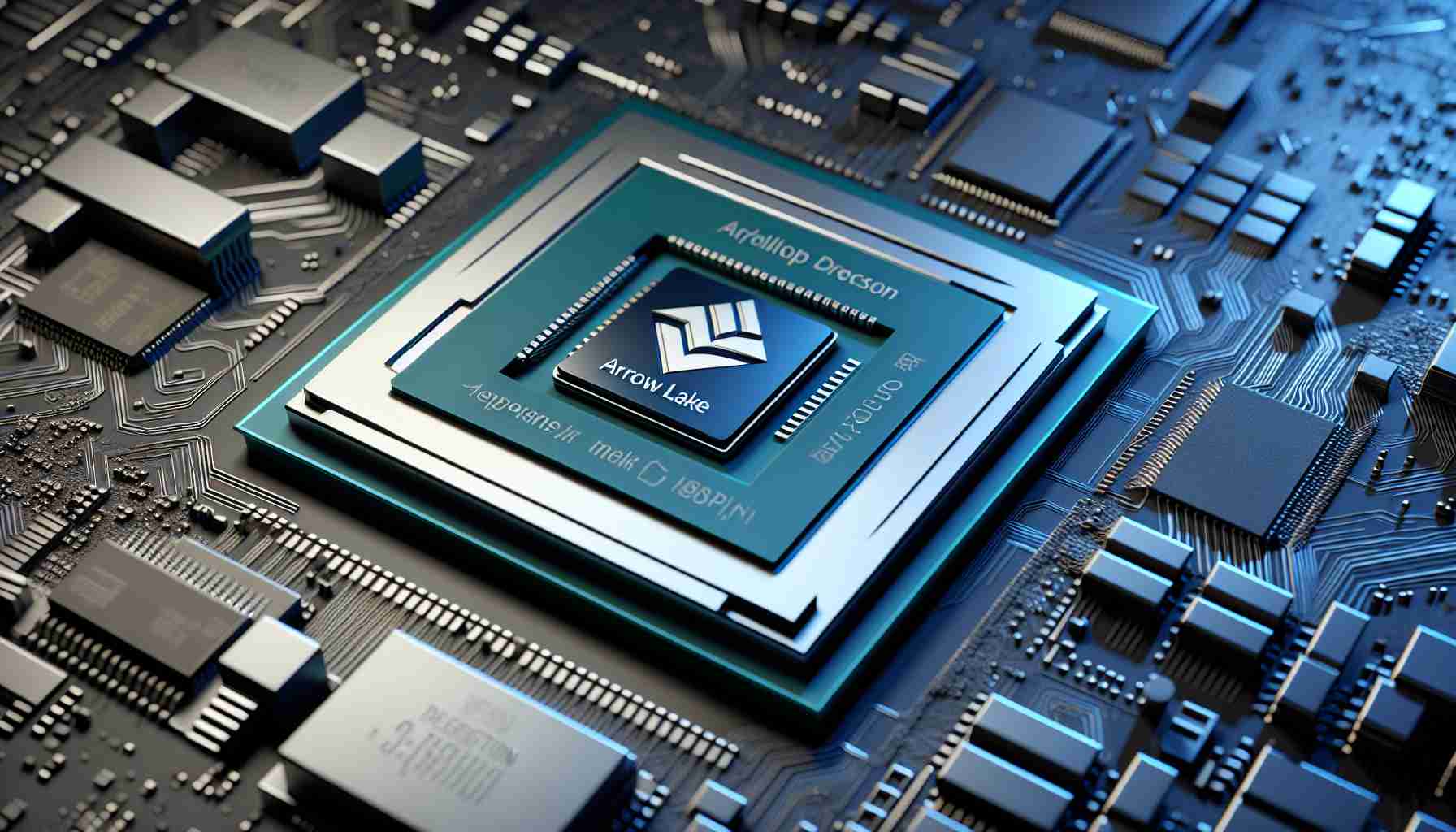Intel has announced the launch of its latest desktop processors, marking a significant advancement in their product lineup. The new Core Ultra 200S processors, known internally as Arrow Lake, are set to revitalize the desktop computing experience with groundbreaking features previously reserved for laptops.
These processors introduce a chiplet-based architecture, which is a shift from traditional designs, enhancing performance and flexibility. With the incorporation of new manufacturing techniques and an updated CPU and GPU architecture, users can expect to benefit from both increased efficiency and processing power. A standout feature of the Arrow Lake series is the inclusion of a neural processing unit (NPU), aimed at significantly improving tasks related to artificial intelligence and machine learning.
One of the key selling points of these processors is their power efficiency. Intel has prioritized this aspect, especially after previous generations showed high consumption rates. However, while these new desktop CPUs offer performance upgrades, actual gains will vary depending on the specific workloads and applications being executed.
The Arrow Lake processors will be officially released on October 24th, and they have maintained a pricing structure similar to the earlier 14th-generation models, with slight reductions in cost. This launch not only provides consumers with improved desktop options but also signifies Intel’s commitment to merging advanced capabilities with energy efficiency in the growing landscape of computing technology.
Intel’s Arrow Lake: A Leap Forward in Desktop Processing Technology
Intel has officially unveiled its highly anticipated Arrow Lake desktop processors, representing a significant leap forward in computing technology. These processors are not just an incremental upgrade but promise to redefine user experiences by integrating features that enhance both performance and efficiency.
Innovative Chiplet Architecture
The Arrow Lake series utilizes a chiplet-based architecture, which consists of smaller, modular units that can be independently manufactured and combined. This design not only streamlines production but also allows for tailored performance enhancements based on user needs. Each chiplet can be optimized for different tasks, providing flexibility that is particularly valuable in diverse computing environments. This contrasts sharply with traditional monolithic CPU designs and positions Intel favorably against competitors that rely on similar modular approaches.
Neural Processing Units for AI Integration
A distinguishing feature of the Arrow Lake processors is the introduction of Neural Processing Units (NPUs). These dedicated AI components facilitate improved performance for machine learning tasks and artificial intelligence applications, which are increasingly prominent in today’s software landscape. This addition sets the Arrow Lake series apart from previous generations, allowing users engaged in AI development to leverage enhanced computational power seamlessly.
Important Questions Explored
1. What are the expected performance gains with Arrow Lake?
– With Arrow Lake, Intel markets significant performance improvements over the previous generation, particularly in multi-threaded applications and AI workloads. Real-world gains may vary depending on the use case; however, benchmarks are expected soon post-launch for further clarity.
2. How does Intel plan to address potential competition?
– Intel has acknowledged the rise of AMD and NVIDIA, and the Arrow Lake launch is part of a broader strategy to recapture market share. The new architecture and integrated AI capabilities aim to provide a competitive edge that appeals to gamers and professionals alike.
3. What are the challenges in the transition to chiplet architectures?
– While chiplet designs offer numerous advantages, they can also present complexities in software optimization and system integration. Developers will need to adapt their applications to fully exploit the modular capabilities of the Arrow Lake processors.
Advantages of Arrow Lake Processors
– Enhanced Energy Efficiency: Arrow Lake processors are designed with power efficiency in mind, which could lead to lower electricity bills and a reduced carbon footprint compared to previous models.
– Increased Performance: With the new chiplet architecture and NPUs, users can expect speed improvements in applications ranging from gaming to professional software.
– Versatility: The architecture allows users to tailor performance for different workloads, making these processors suitable for a wide range of users—from gamers to data scientists.
Disadvantages of Arrow Lake Processors
– Potential Software Compatibility Issues: As with any new architecture, there may be initial compatibility concerns with existing software that is not optimized for chiplet-based designs.
– Pricing Considerations: While Intel maintains a similar pricing structure to its previous models, the initial cost of adopting new technology can still be a barrier for some users.
– Rivalry with Competitors: Intel’s aggressive push with Arrow Lake comes at a time when rival companies are also enhancing their product offerings, resulting in a highly competitive environment.
Conclusion
As the Arrow Lake processors launch on October 24th, they promise a resurgence in Intel’s desktop market strategy, featuring cutting-edge technology and efficiency. This bold step not only caters to current demands for high performance and AI capabilities but also sets the stage for future developments in desktop computing.
For further details and updates about Intel’s innovative approaches and technologies, visit Intel.












